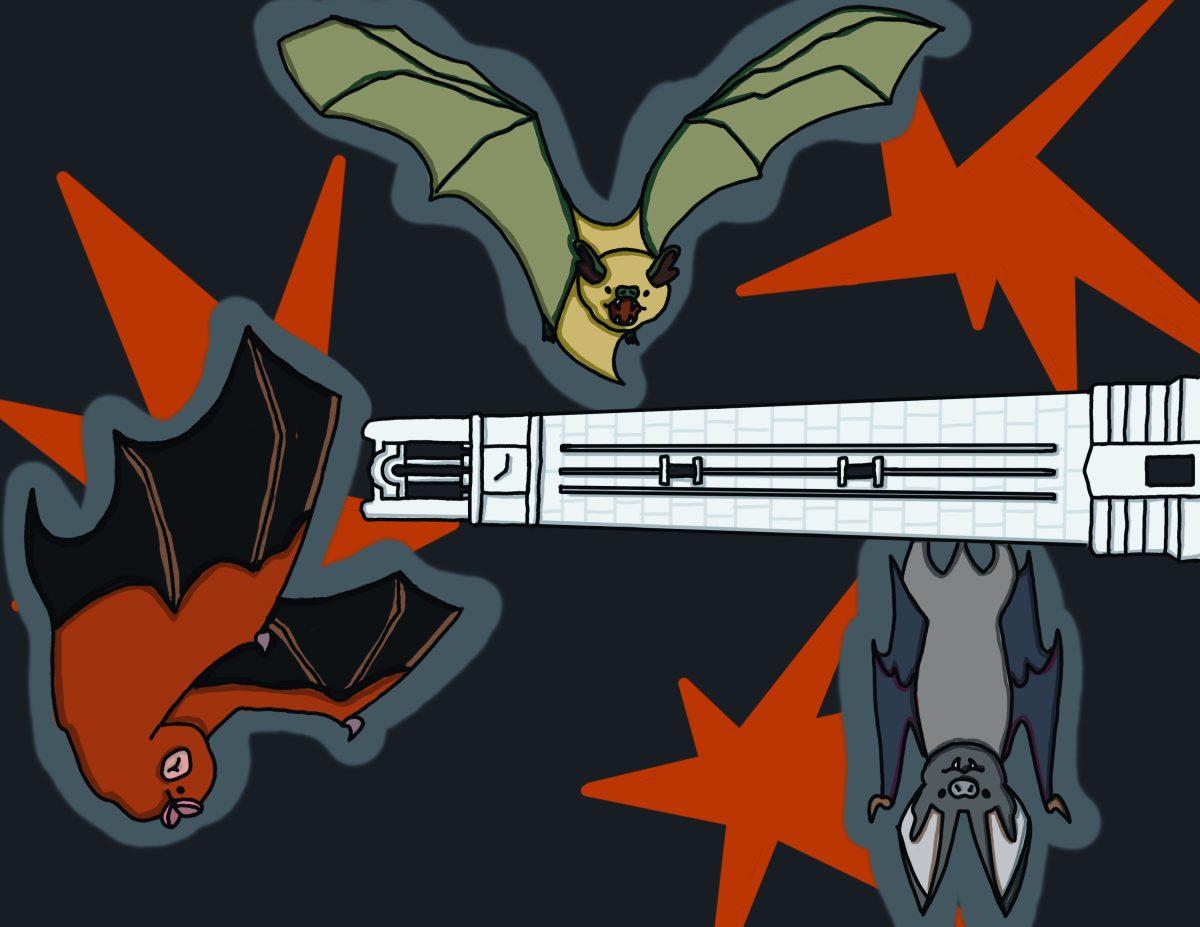Bats, often associated with vampires, witches and disease, have garnered a fearful reputation throughout history for their strange looks and unusual behaviors. However, local wildlife experts question whether this reputation is deserved.
Lisa Gatens, collection manager of mammalogy at the North Carolina Museum of Natural Sciences, said bats are the only mammals that can fly and are present all over the world, except in Antarctica. Gatens said while people often think bats are related to rodents, they are more closely related to primates.
Gatens said North Carolina is home to 16 species of bats, all of which eat half their body weight in insects every night.
Ed Corey, inventory biologist for North Carolina State Parks, said bats save the U.S. economy an estimated $3 billion annually by eating agricultural pests. He said $1 billion is from the corn industry, as bats eat corn earworm moths whose larvae pose a threat to corn crops.
Gatens said walnut orchards are building bat houses to ward off threats to walnut trees by encouraging bats to stay and eat codling moths. Gatens also said the tequila industry depends on bats, as two species of pollen-feeding bats are the sole pollinators of agave plants.
Corey said big brown bats and Mexican free-tailed bats have been recorded on campus. Big brown bats live in cracks inside trees. Mexican free-tailed bats live in caves and often inhabit parking garages and the lower arches of bridges in urban environments. Mexican free-tailed bats have the fastest horizontal flying speed of any animal, reaching speeds of up to 100 miles per hour.
Bats have become known to many as vectors of disease, especially rabies. Corey said bats have the highest rate of rabies for any mammal, but it is difficult to know the true rate because entire colonies of bats are impossible to test.
“It’s been reported that about 1% of bats have rabies,” Corey said. “Most of the bats that are tested for rabies are ones that are brought in because they’re acting funny. If you were to go into a hospital and find someone who was feeling ill or not doing well, you may find that a large percentage of those people are affected by the disease.”
Gatens said bats people fear bats due to the mystery of their nocturnal lives.
“We tend to fear what we don’t know,” Gatens said. “What plays into that is they’re nocturnal. … Their flight is just different from birds. And so I think people think it’s weird or scary — again, people are afraid of what they don’t know. And especially ages ago when people had to come up with explanations for things, [they] were typically supernatural.”
Vampires had existed in European folklore for a thousand years before they became associated with bats. Gatens said this association, cemented in Bram Stoker’s “Dracula” in 1897, is due to their nocturnal nature and the discovery of the three species of vampire bats in the Americas.
“It’s not that they’re afraid of light, or they can’t be in it,” Gatens said. “Their eyes are developed for seeing in the dark, and it hurts their eyes. The old world bats that have the name vampire associated with them are not at all vampire bats, they just look kind of bizarre because they have these facial [features] we call leaves on their ears or nose.”
Corey said the real problems with bats appear when provoked by humans.
“The problem is not them; it’s when we interact with them,” Corey said. “So if we’re incorporating them into our diet, or if we’re harassing them and spilling their blood, it will create these crossover events — it’s not the bats’ fault at all.”













